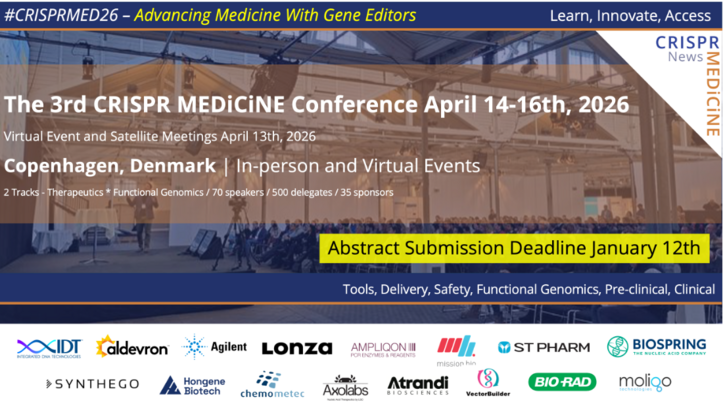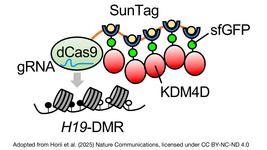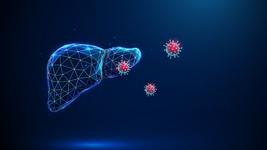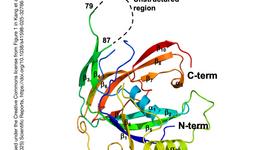The Latest Clinical Trial Updates from CRISPR Medicine News
FDA awards RMAT designation to Beam's BEAM-302 for treatment of alpha-1 antitrypsin deficiency
On Monday, Beam Therapeutics announced that the FDA has granted a Regenerative Medicine Advanced Therapy (RMAT) designation to BEAM-302 for the treatment of alpha-1 antitrypsin deficiency (AATD).
BEAM-302 is an in vivo liver-targeting lipid nanoparticle (LNP) formulation of base-editing reagents designed to correct the PiZ mutation found in the majority of severe homozygous AATD patients. BEAM-302 is designed to make a single A-to-G correction of the PiZ mutation in the SERPINA1 gene.
By correcting PiZ at the DNA level, BEAM-302 has demonstrated its potential to provide multiple therapeutic benefits from a single administration; it reduces the amount of misfolded Z-AAT in circulation, generates therapeutic levels of corrected protein (M-AAT), and increases total and functional AAT above the protective threshold.
An important distinction from current augmentation therapies is that the correction occurs in the native genetic location, which should allow AAT levels to increase physiologically in response to inflammation or infection. This is a critical aspect of AAT's normal function that is not possible with protein replacement approaches.
Positive clinical data recently shared for BEAM-302
In March 2025, Beam shared positive initial data from its Phase 1/2 clinical trial of BEAM-302 in patients with alpha-1 antitrypsin deficiency (AATD). Those results, summarised in a previous CMN clinical trial update, demonstrate the first-ever clinical genetic correction of a disease-causing mutation through base-editing technology.
Speaking about the RMAT designation, Giuseppe Ciaramella, Ph.D., President of Beam Therapeutics said: »Just weeks after the clearance of our US investigational new drug application, we are pleased to report that the FDA has now granted RMAT designation to BEAM-302, recognising its potential as a transformative, one-time treatment for patients living with AATD. This designation underscores the strength of our clinical data to date and the promise of base editing to directly correct the genetic mutation that is the root cause of most cases of severe AATD.«
See the official press release for further details.
RMAT designation
The FDA established the RMAT designation programme in 2016. This programme covers therapeutic tissue engineering products, human cell and tissue products, and combination products, as well as gene therapies that lead to a durable modification of cells. Candidate drugs may be eligible for RMAT designation if they are: defined as a cell therapy, therapeutic tissue engineering product, human cell and tissue product, or any combination product using such therapies or products, intended to treat, modify, reverse, or cure a serious or life-threatening disease or condition, and if preliminary clinical evidence indicates the product has the potential to address unmet medical needs for such a disease or condition.
Read more about RMAT here.
CRISPRMED26, April 14-16th, 2025 - Stay tuned...

FDA clears Ensoma’s IND application for first-ever in vivo HSC-based gene therapy
Ensoma (Boston, US) announced on Monday that the FDA has cleared its IND application for its lead programme, EN-374. This means that the company can now initiate a Phase 1/2 clinical trial of EN-374 in patients with the rare and severe immunodeficiency, X-linked chronic granulomatous disease (X-CGD).
EN-374 is an in vivo haematopoietic stem cell (HSC) therapeutic candidate designed to cure X-CGD by restoring the activity of the NADPH oxidase complex. This complex is essential for neutrophil function in innate immunity and is deficient in X-CGD as a result of mutations in the CYBB gene.
First in vivo genetically engineered HSC therapeutic candidate
EN-374 is the first therapeutic candidate that involves in vivo gene insertion into HSCs. It is designed as a one-time, off-the-shelf treatment that can eliminate the expensive and time-consuming manufacturing and burdensome pre- and post-treatment processes required for ex vivo HSC therapies. By targeting HSCs - the master immune cells that give rise to all blood cells - EN-374 aims to create a durable supply of functional neutrophils to treat the root cause of X-CGD. This approach is designed to increase access to genetic medicine while improving the treatment experience for patients compared to existing ex vivo therapies.
In X-CGD, NADPH oxidase function is reduced, leading to decreased production of reactive oxygen species, which are used by phagocytes to kill bacteria and fungi. EN-374 is engineered using a Sleeping Beauty transposon system. Two distinct virus-like particles (VLPs) are used to deliver 1) a genetic payload containing a healthy copy of the CYBB gene under the control of a neutrophil-selective promoter and 2) DNA encoding Sleeping Beauty 100X transposase and Flp recombinase.
This approach engineers HSCs for sustained expression of the CYBB transgene specifically in neutrophils, which is the primary cell type affected by X-CGD. This restores the function of the NADPH oxidase enzyme complex that is critical in the innate immune response against bacteria and fungi. In preclinical studies, EN-374 demonstrated therapeutic restoration of CYBB protein expression and NADPH oxidase activity in circulating neutrophils.
EN-374 trial to begin in Q4 2025
The upcoming Phase 1/2 trial will evaluate the safety and potential efficacy of EN-374 while identifying an optimal dose for further development. The study will begin with adult patients in a dose-escalation design, followed by paediatric participants in a dose-expansion cohort. Ensoma plans to initiate the trial in Q4 2025.
Commenting on the IND clearance, Ensoma’s CEO Jim Burns said: »The FDA’s clearance of our EN-374 IND is a pivotal moment for Ensoma that further establishes our unique in vivo HSC engineering platform and brings us one step closer to meaningfully improving outcomes for people living with X-CGD and other chronic diseases. We have completed all manufacturing activities for EN-374, through which we have successfully demonstrated reproducibility and scalability, and anticipate initiating our Phase 1/2 clinical trial in Q4 2025. We are excited to explore the potential of EN-374 to offer a simpler, more accessible approach to restoring immune function in X-CGD than HSC transplantation or ex vivo therapies.«
In February 2025, Ensoma announced that the FDA had granted both Rare Pediatric Disease and Orphan Drug designations to EN-374, for the treatment of X-CGD.
See the official press release for further details on EN-374's IND clearance.
Stay tuned for more updates
We will continue to update you on BEAM-302 and EN-374 as new details emerge. In the meantime, you can find all of our coverage on clinical-stage gene editing programmes here.
For a complete overview of current gene editing clinical trials, check out CRISPR Medicine News' Clinical Trials Database.
To get more of the CRISPR Medicine News delivered to your inbox, sign up to the free weekly CMN Newsletter here.
Tags
ArticleNewsClinical News UpdatesAlpha-1 Antitrypsin Deficiency, AATDChronic Granulomatous Disease (CGD)Beam Therapeutics Inc.Ensoma
CLINICAL TRIALS
Sponsors:
Base Therapeutics (Shanghai) Co., Ltd.
Sponsors:
Base Therapeutics (Shanghai) Co., Ltd.







